Hypermobility Mastery Program
A Transformative Course for the Musculoskeletal Clinician
Officially Approved for 12 Asynchronous CEUs
Our goal is to empower MSK clinicians to recognize their ability to make a meaningful difference in the lives of their hypermobile patients.
Our welcoming and clinically challenging environment will equip you with the necessary tools to confidently assess and manage hypermobility in an MSK setting.
Meet Your Coaches

Taylor Goldberg, DC
Taylor is a Chiropractor in Colorado Springs who has transitioned into a virtual hypermobility coach. She exclusively focuses on treating hypermobility in a virtual setting, assisting clients in achieving their goals from the comfort of their own homes.
Taylor’s background in chiropractic school and clinical practice has highlighted the urgent need for increased education and awareness surrounding hypermobility, especially in the current climate. As hypermobility disorders gain recognition, it becomes the responsibility of MSK clinicians to provide support to these patients.
This is why we have developed this program. By equipping more clinicians with the knowledge and skills to approach this population with empathy and flexibility, we hope to help this population receive the high-quality care they deserve.

Dr. Tanya Tschirpig, MHSc Chiropractor
Tanya Tschirpig is a Chiropractor based in Durban, South Africa. She runs her own practice while working with other practitioners in their virtual spaces to facilitate active care!
Tanya was exposed to the need for more awareness around hypermobility as she went through her own diagnostic journey during her student years and saw the discrepancies between literature and education. She further realized that there were often not efficient systems in place to guide patients to success once they had some answers.
It was through those experiences that her passion for facilitating higher-quality healthcare journeys for these patients became a priority to her and led to her co-development of this program.
Earn 12 Asynchronous CEU hours!!
We are officially approved for 12 asynchronous CEU hours for chiropractors. CEU requirements vary by state, so please check with your state board to confirm acceptance.
At this time, the following states do not accept asynchronous hours for CE credit: Kentucky (KY), Alabama (AL), Wisconsin (WI), Alaska (AK), Arkansas (AR), Kansas (KS), Mississippi (MS), Missouri (MO), Tennessee (TN), and Vermont (VT).
Not a chiropractor?
No problem. PTs and OTs can still earn CE credit by self-submitting to their state boards, and many of our past participants have done so successfully.
Let’s change the way we care for hypermobile humans together.
See you inside.
What's Included
Asynchronous Curriculum
12-week guided curriculum led by our team & guest speakers, created to empower you with the knowledge required to work with this unique patient population, accessible for a lifetime.
Support & Guidance
Comprehensive support and guidance from industry leaders, ensuring your confidence and competence in treating hypermobile patients efficiently & effectively.
Patient Handouts
Gain exclusive access to a wide range of patient handouts that you can utilize in your office to educate, support self-management, and encourage accountability among your patients.
What We Cover
Week 1: Hypermobility Classifications & Diagnostics
Week 1: Hypermobility Classifications & Diagnostics
In Week 1, you will gain insights into your role within the diagnostic process of hEDS. You will also acquire knowledge about the four distinct hypermobility classifications and learn how to differentiate between HSD and hEDS, understanding the significance of this distinction. By the end of the week, you will be proficient in guiding three different types of patients through the initial intake process:
- Patients with a known history of hypermobility.
- Patients who have heard about hypermobility and suspect they may be dealing with it.
- Patients who are unfamiliar with hypermobility, but you suspect it may play a role in their pain story.
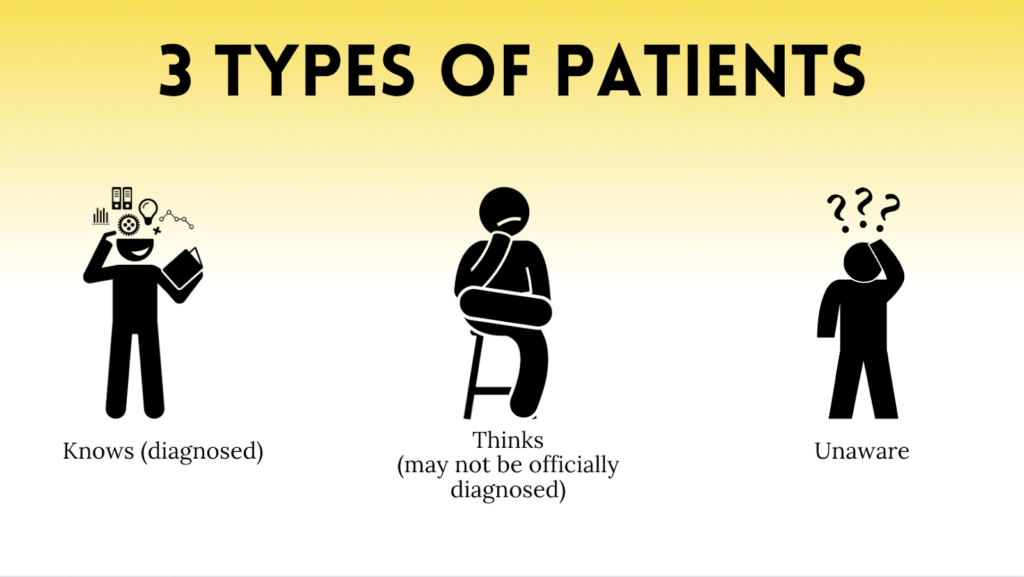
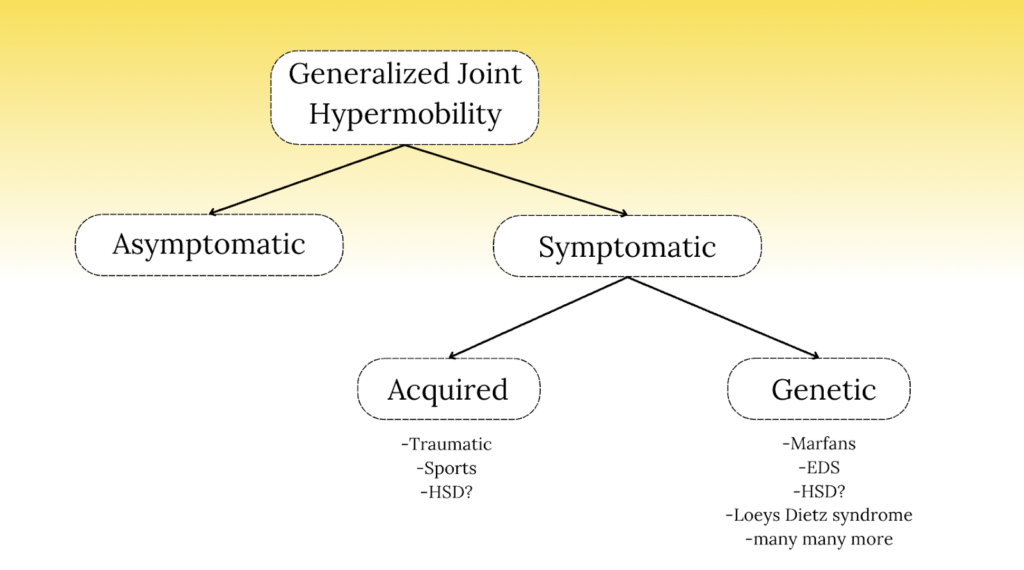
Week 2: Considering Non-MSK Manifestations
Week 2: Considering non-musculoskeletal manifestations of hypermobility
During this module, you will gain insight into the common non-musculoskeletal comorbidities often encountered in this patient population. You will understand the practical implications of these comorbidities on patient care, including when to make referrals and how to provide assistance within your professional scope.
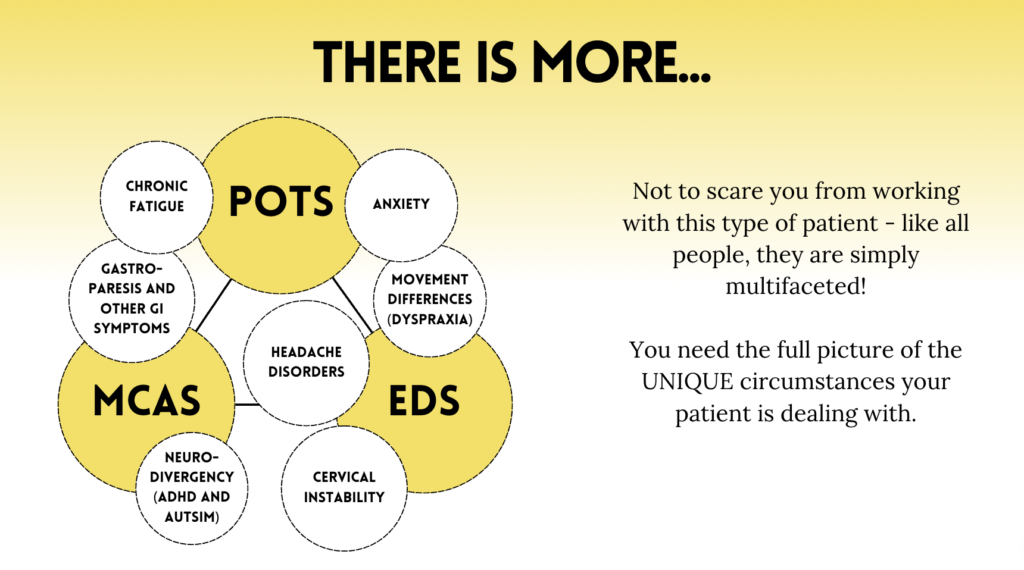

Week 3: Hypermobility Management is Teamwork
Week 3: Hypermobility management is teamwork
This week is dedicated to establishing a comprehensive care team. Individuals in this population have frequently encountered challenges as they navigate various professionals without finding the help and answers they need, leading to exhaustion and difficulty in locating appropriate medical practitioners. Moreover, the majority of your hypermobile patients are likely to experience multisystemic issues that fall beyond your professional scope, necessitating inter-professional care.
During this week, you will acquire the skills to assist your patients in assembling their own team of specialists. You will also learn strategies for networking with other professionals working with this population, allowing you to provide the best possible care to your patients.
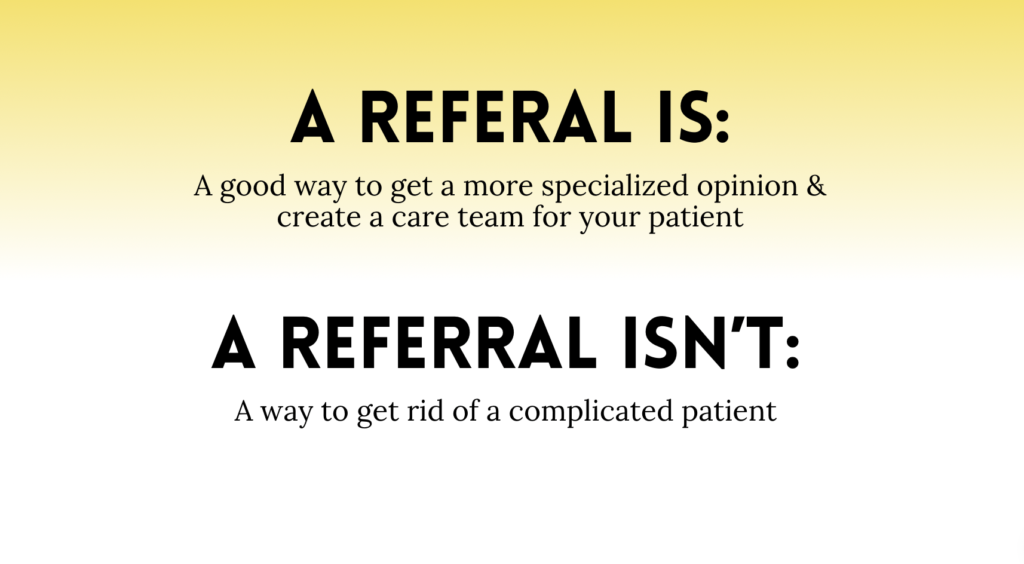
Week 4: General MSK Impacts
Week 4: General Musculoskeletal Impacts of Hypermobility
This module marks the beginning of the bulk of the curriculum. In this week, our focus will be on the general trends observed in hypermobility, which encompass aspects such as lower baseline muscle tone, reduced proprioception, and central sensitization. This is where you will gain insights into addressing common questions, including:
- Which movements should be avoided?
- Is training at the end range advisable?
- Is stretching appropriate for individuals in this population?"
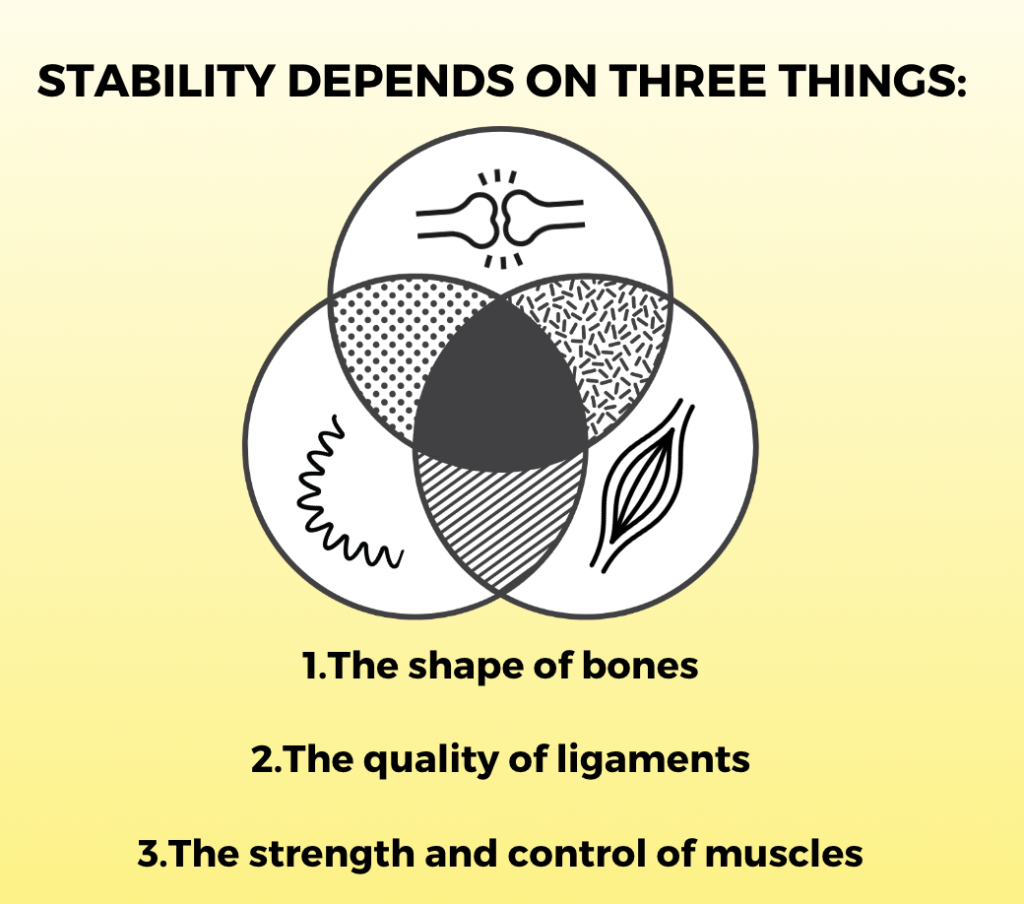
Week 5: Subluxations/Dislocations
Week 5: Subluxations/Dislocations In Hypermobility
This week, you will acquire the skills to address subluxations and dislocations, spanning from acute care perspectives to long-term strategies aimed at reducing their intensity and frequency. You will also learn effective communication techniques when dealing with patients experiencing these issues and how to identify red flags that may necessitate referrals. Additionally, you will receive a patient handbook to distribute, containing post-subluxation care routines for each extremity, along with general guidelines to follow immediately after such incidents occur.
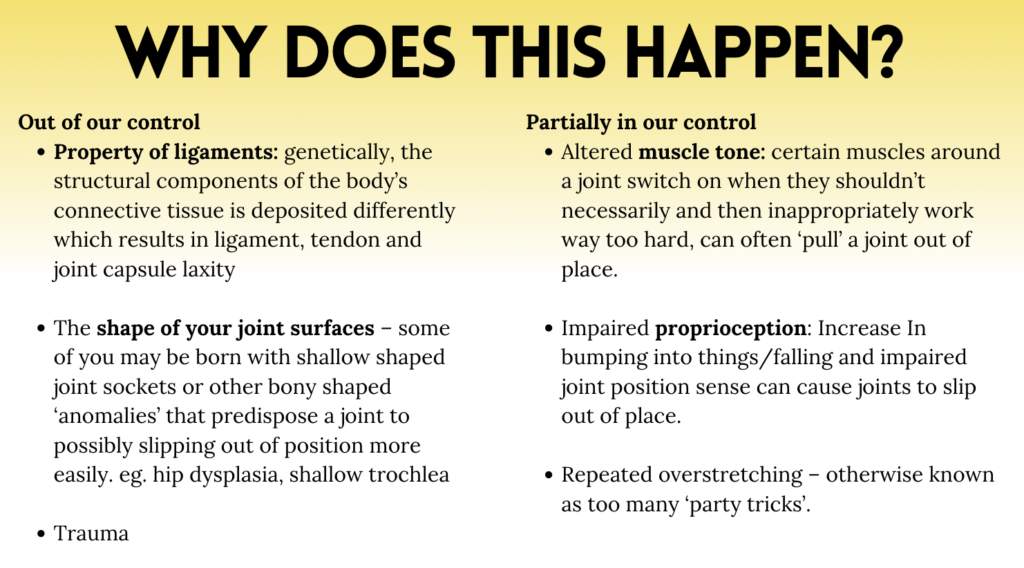
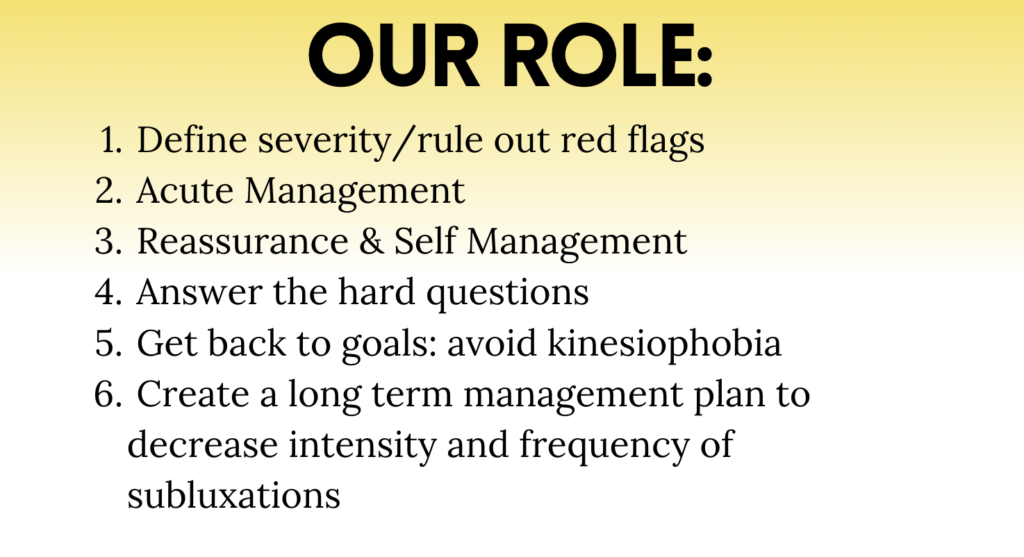
Week 6: Common Musculoskeletal Conditions
Week 6: Common Musculoskeletal Conditions Seen in the Hypermobile Population
This week, you will gain insights into recognizing and identifying common conditions often observed in this population, including but not limited to:
- UCI
- Hip Dysplasia
- Costochondritis
- Ankle sprains
- Pelvic floor dysfunction
- Scoliosis
- TMJD
You will also learn how these conditions impact your treatment plan, both from a passive and active perspective, and when and how to order imaging when necessary. For each of these conditions, you will have access to patient handouts designed to assist both you and your patients in understanding the implications of these conditions for their individual situations.

Week 7: Objective Measurements
Week 7: Objective Measurements
This week, you will discover the objective measurements that can prove valuable in this population and learn how to establish objective goals to ensure that you are making measurable progress. While much of hypermobility may appear subjective, there are crucial objective measures that can serve as valuable guides in our practice.
Week 8: Passive Modalities
Week 8: Passive Modalities
This week, you will gain insight into the do’s and don'ts of passive modalities, encompassing aspects such as the safety of HVLA adjustment, various soft tissue strategies, dry needling, botox, acupuncture, and more.
Additionally, you will learn effective communication techniques for these passive modalities to prevent patient dependency and ensure a comprehensive understanding of each modality's purpose. By the end of this week you will understand when manual therapy is appropriate and beneficial for this population, and when it is contraindicated.

Week 9: Starting a Rehab Plan
Week 9: Starting a Rehab Plan
In this module, you will acquire the skills necessary to create a personalized rehabilitation program that can be adjusted to meet your patients' needs, taking into account their comorbidities and movement limitations. You will also receive guidance on developing programs tailored to specific comorbidities such as POTs, UCI, and more. This week, you will have the opportunity to create an individualized rehab plan for your own patient or client and receive valuable feedback from our coaches.

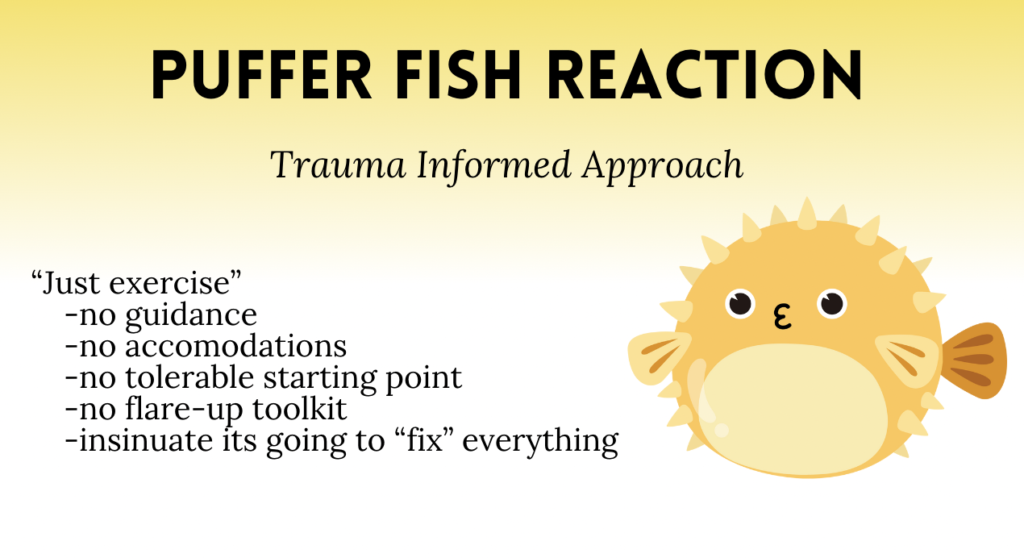
Week 10: Flare Management
Week 10: Flare Management
This week, we will explore flare tracking: what it entails, how we can leverage it, and how to develop flare plans for our patients/clients. Tracking allows us to identify patterns, detect subtle signs of an impending flare, and uncover less apparent causes that may aid us in breaking patterns to prevent future flare-ups.
You will gain proficiency in using flare tracking effectively in practice and learn how to instruct your patients/clients in its independent use.
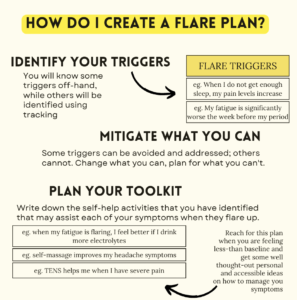
Week 11: The Power of Support
Week 11: The Power of Support
This module focuses on developing strategies to enhance compliance. We will explore various methods to ensure patient accountability, delve into understanding individual barriers, create realistic plans tailored to meet patients where they are, and ensure that these plans are enjoyable and valuable to them. These principles apply not only on typical days but also during flare days, ensuring continuous progress towards our goals.

Week 12: Putting it All Together/Case Study
Week 12: Putting it All Together/Case Study
This week, we will put everything we have learned into practice. You will be guided through a case study in which you will develop both short-term and long-term plans, incorporating self-management strategies, flare tracking, forming a care team, and programming an exercise routine.

How It Works
Weekly Assignments
Over the next 12 weeks, you will dedicate 1 hour per week to viewing the weekly module, followed by a guided assignment tailored to solidify your understanding. The total time commitment will be around 2 hours a week.
Community
Within the app you will have access to a private community of clinicians who share your passion for treating symptomatic hypermobility. This community will provide assistance with clinical case studies & address any business-related questions.
Access to Research Hub
Staying up-to-date on the current available evidence can be challenging, especially with the limited availability of hypermobility research. The research hub will save you from endless searching, and enable you to prioritize important studies.
The Outcome
At the end of the 12 weeks, you will possess all the knowledge required to develop a comprehensive treatment plan, starting from the initial visit, progressing through the diagnostic process, navigating the system, crafting a flexible reha plan, & handling all the flares in between.
FAQs
Who is this course for?
This course is for Physical Therapists, Chiropractors, and Occupational Therapist who want to work with the hypermobile population, or are already working in this space & looking to
- Enhance their understanding of how to assist this population
- Update their knowledge of current hypermobility research & its practical applications
- Learn how to utilize your full scope of practice to fully support this population from diagnosis to flare management & everything in between
Can students take this course?
Yes, we recommend waiting until you are in the clinic so that you can apply what you've learned in practice. Not sure if you are ready? Book a discovery call here.
Earn 12 Asynchronous CEU hours!!
We are officially approved for 12 asynchronous CEU hours for chiropractors. CEU requirements vary by state, so please check with your state board to confirm acceptance.
At this time, the following states do not accept asynchronous hours for CE credit: Kentucky (KY), Alabama (AL), Wisconsin (WI), Alaska (AK), Arkansas (AR), Kansas (KS), Mississippi (MS), Missouri (MO), Tennessee (TN), and Vermont (VT).
Not a chiropractor?
No problem. PTs and OTs can still earn CE credit by self-submitting to their state boards, and many of our past participants have done so successfully.
Let’s change the way we care for hypermobile humans together.
See you inside.
Can massage therapists, and fitness professionals take this course?
Not yet, but join our email list to be the first to know once you can!
Can you join the course at any time?
Yes! This course is self paced and can be joined at any time!
How much time will I need to put into the program?
To maximize the benefits of this program, it's essential to commit a minimum of 2 hours per week for a duration of 12 weeks.
Will I lose access to everything at the end of the 12 weeks?
At the conclusion of the 12 weeks, you will retain access to all asynchronous materials, including the 12-week video curriculum, research hub, and patient handout library. However, you will no longer have access to the synchronous components of the program, which encompass live support from our team for case studies, business questions, and more.
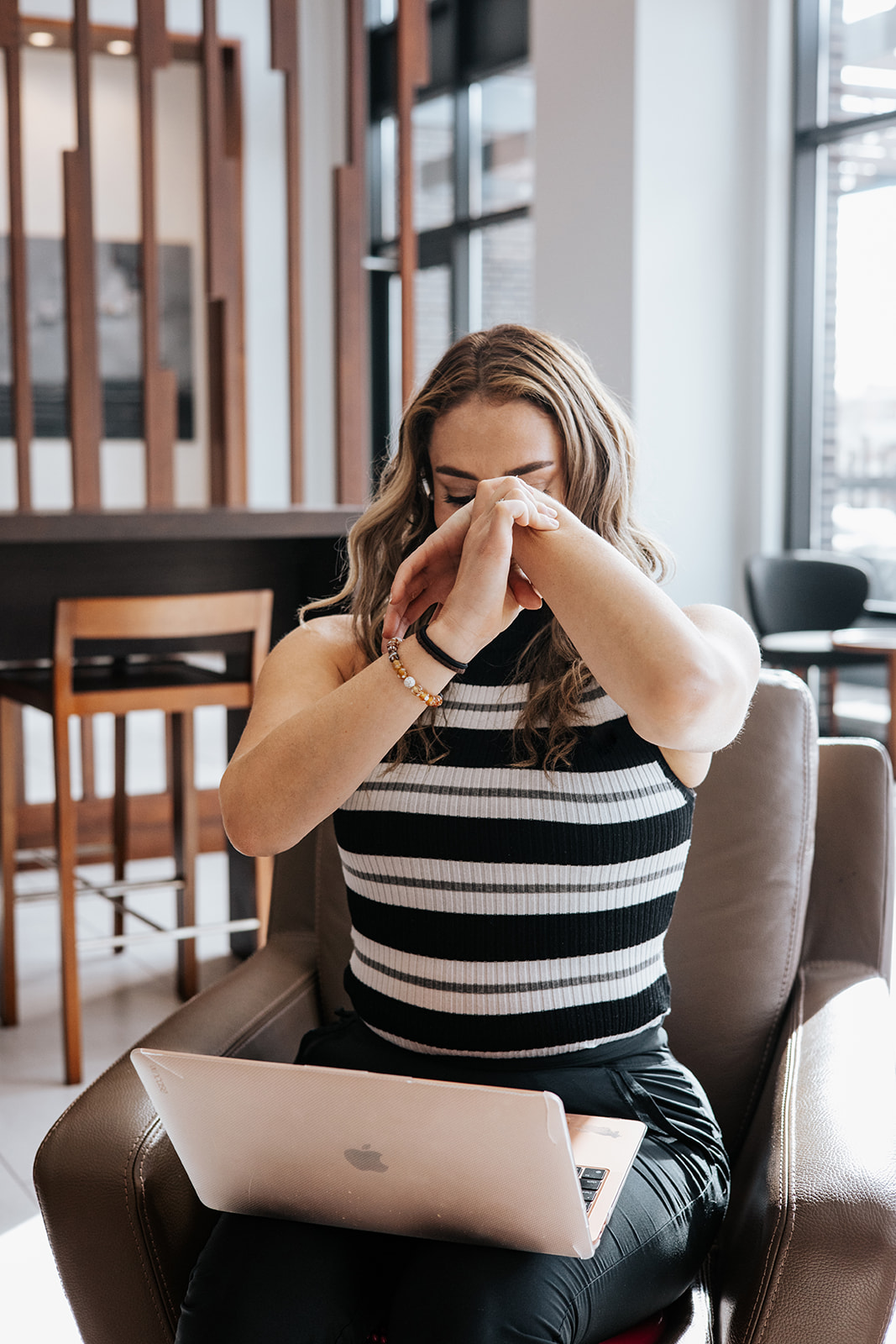
OUR WHY
We created this program because we know how little hypermobility education there is in PT, OT, and chiropractic schools. Our goal is to cultivate clinicians who are confident in their knowledge and skills when it comes to treating hypermobile patients. Many students and clinicians aspire to deliver evidence-based, patient-centered care of high value, but often feel that a crucial piece of the puzzle is missing.
This is where we step in! By equipping you with the knowledge and evidence necessary to understand and safely manage hypermobile patients, you will leave with the confidence to provide effective care to this population.
With a welcoming and clinically challenging environment alongside the support you need, we are here to help you provide the fulfilling and evidence-based care that your hypermobile patients deserve.
STAY CONNECTED
Get the latest updates on blog posts, podcasts, updates, and hypermobility research.